SEQUENCE OF TRANSFORMATIONS ON FUNCTIONS
Let us consider the function f(x), while comparing the given function with
f(x) = a f(b(x - h)) + k
it is easy to understand the concept transformation.
Here,
a = Vertical stretch or shrink
- If a > 1, vertical stretch
- If 0 < a < 1, vertical shrink
Note : If a is negative, there must be reflection across x-axis.
b = horizontal stretch or shrink
- If b > 1, horizontal shrink
- If 0 < b < 1, horizontal stretch
Note : If b is negative, there must be reflection across y-axis.
h = horizontal move
- If h is positive, move the graph h units to the right
- If h is negative, move the graph h units to the left.
k = vertical move
- If k is positive, move the graph k units up.
- If h is negative, move the graph h units down.
Problem 1 :
Describe how each transformation or sequence of transformations of the function
f(x) = 3x2
will affect the number of zeros the function has.
a) a vertical stretch of factor 2
b) a horizontal translation 3 units to the left
c) a horizontal compression of factor 2 and then a reflection in the x-axis
d) a vertical translation 3 units down
e) a horizontal translation 4 units to the right and then a vertical translation 3 units up
f) a reflection in the x-axis, then a horizontal translation 1 unit to the left, and then a vertical translation 5 units up
Solution :
f(x) = 3x2
a) a vertical stretch of factor 2
Vertical stretch = 2
f(x) = 2(3x2)
f(x) = 6x2
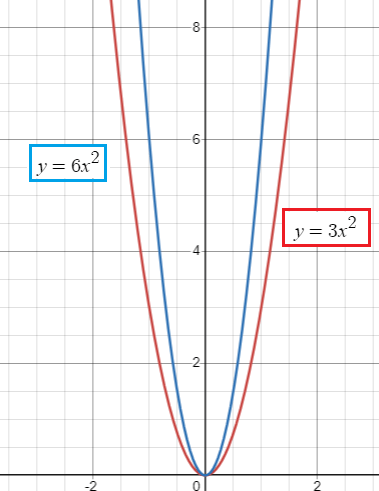
b) a horizontal translation 3 units to the left
Horizontal translation = 3 units, since it is left, we should apply -3
f(x) = 3(x - h)2
Applying -3 for h, we get
f(x) = 3(x - (-3))2
= 3(x + 3)2
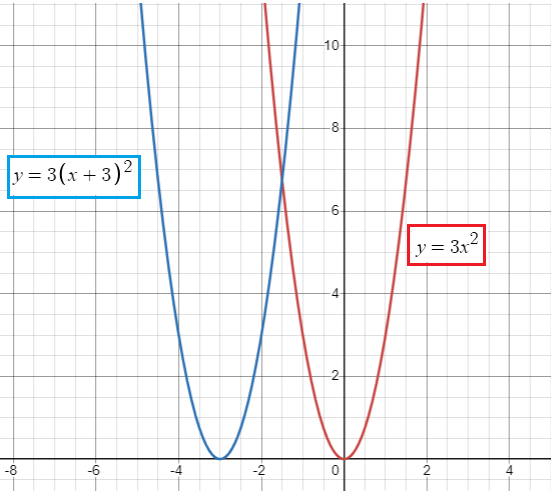
c) a horizontal compression of factor 2 and then a reflection in the x-axis
Horizontal compression, a = 2
reflection across the x-axis, so y = -y
f(x) = 3x2
= -3(2x)2
= -3(4x2)
= -12x2
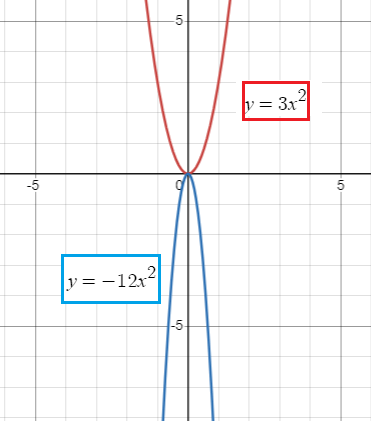
d) a vertical translation 3 units down
Vertical translation, so k = -3 (since it is down 3 units)
f(x) = 3x2
f(x) = 3x2 - 3
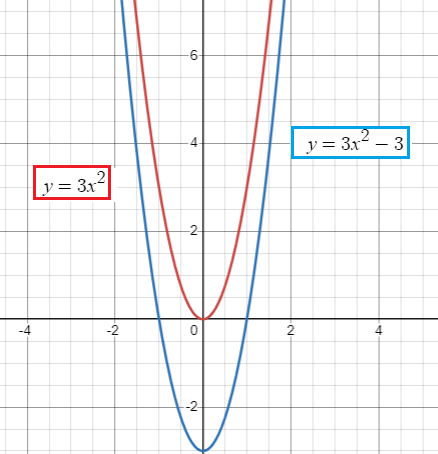
e) a horizontal translation 4 units to the right and then a vertical translation 3 units up
f(x) = 3x2
Horizontal translation = 4 (moving right)
Vertical translation = 3 (up)
f(x) = 3(x - 4)2 + 3
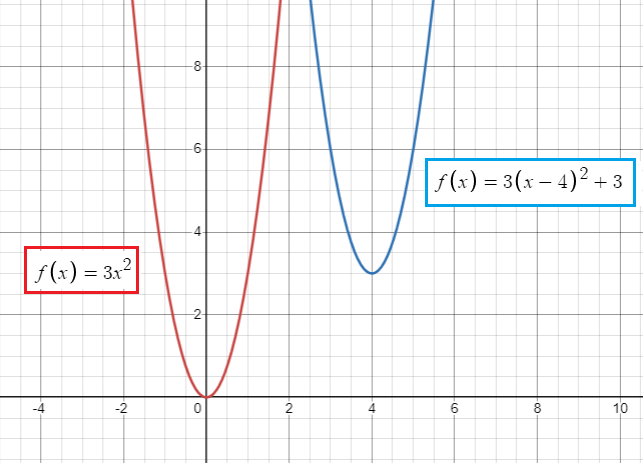
f) a reflection in the x-axis, then a horizontal translation 1 unit to the left, and then a vertical translation 5 units up
- Reflection across x-axis, so put y = -y
- Horizontal translation of 1 unit to the left. So, put h = -1
- Vertical translation of 5 units up. So, put k = 5
f(x) = 3x2
f(x) = -3(x - (-1))2 + 5
f(x) = -3(x + 1)2 + 5
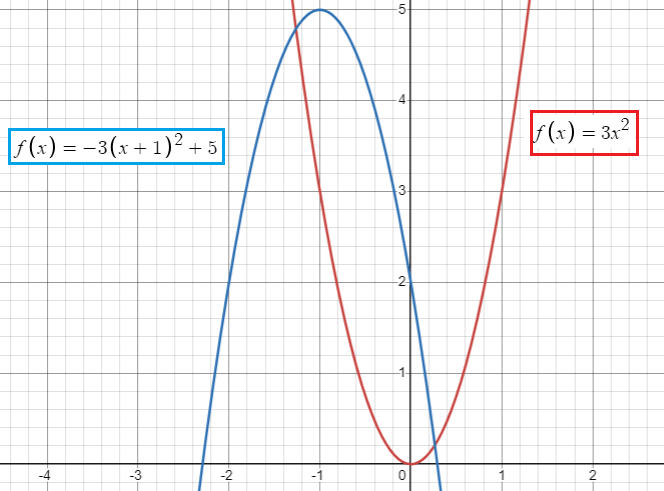
Problem 2 :
For the graph of f(x) = √x, identify the transformation that would not be applied to f(x) to obtain the graph y = 2f(-2x) + 3
a) Vertical stretch by a factor of 2
b) Reflection in x-axis
c) Vertical translation up 3 units.
d) Horizontal compression by factor of 1/2.
Solution :
Given function is f(x) = √x
y = 2f(-2x) + 3
By observing the transformation,
Horizontal compression of 2 units, vertical translation of 3 units up and vertical stretch of 2 units. Along with reflection across y-axis.
So, option b will not work by comparing with the list of transformations.
Recent Articles
-
Finding Range of Values Inequality Problems
May 21, 24 08:51 PM
Finding Range of Values Inequality Problems -
Solving Two Step Inequality Word Problems
May 21, 24 08:51 AM
Solving Two Step Inequality Word Problems -
Exponential Function Context and Data Modeling
May 20, 24 10:45 PM
Exponential Function Context and Data Modeling